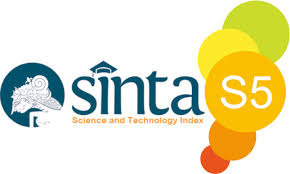Sports Activity Analysis in Identifying Student Behavior During Sports
DOI:
https://doi.org/10.52188/jeas.v6i1.1187Keywords:
aktifitas olahraga, identifkasi perilaku siswa saat berolahragaAbstract
This study aims to identify sports activities in shaping students' behavior when exercising. The research method used is ex post facto with quantitative descriptive analysis. The population of the study was students of SMP Negeri 6 Siak Hulu Kampar Riau with samples taken randomly (random sampling) based on a questionnaire distributed to students via google form, so that the total number of samples taken for students who filled out the questionnaire was 175 people. The research instrument used a questionnaire to see students' habits in sports activities and a Likert scale questionnaire to see students' behavior and/or character when exercising. The data analysis used was percentage test analysis. The results of the data analysis showed that the sports activities of students of SMPN 6 Siak Hulu based on their routine of doing sports in a week were categorized as almost always and very often doing sports activities as many as 69 people with a percentage of 39.01%, while the category was very rare and almost never doing sports activities in a week was 106 people with a percentage of 61.01%. Meanwhile, the analysis of student behavior during classical sports and/or overall in doing sports activities in a week can be seen from the results, namely the category of strongly agreeing and agreeing in doing sports activities in a week amounted to 78 people with a percentage of 43.33%, while the category of disagreeing and strongly disagreeing amounted to 97 people with a percentage of 56.67%. The importance of a person or student in maintaining and taking time for sports activities, especially if it is done routinely and intensely, because the benefits of a person's routine in doing sports activities in addition to maintaining fitness to become a healthy person, sports can also shape a person's character (attitude and behavior) due to the routine of doing these sports activities.
References
Bae, Jung-Sup, Weisheng Chiu, and Sang-Back Nam. 2024. “The Model of Goal-Directed Behavior in Sports Participation: A Meta-Analysis Comparing Pre- and Post-COVID-19 Eras in the Republic of Korea.” Behavioral Sciences 14(7):556.
Brendl, C. Miguel, and Steven Sweldens. 2024. “Defining the Stimulus in Stimulus–Response Interventions: On the Need to Embrace Theory and Organism in Stimulus–Organism–Response.” Consumer Psychology Review 7(1):116–20.
Cendra, Romi. 2016. “Pengaruh Menonton Pertandingan Sepakbola Di Televisi Terhadap Perilaku Sosial Anak Dalam Bermain Sepakbola.” Journal Sport Area 1(1):71.
Cendra, Romi, and Novri Gazali. 2019. “Intensitas Olahraga Terhadap Perilaku Sosial.” Media Ilmu Keolahragaan Indonesia 9(1):13–17.
GSDR. 2015. “GSDR 2015 Brief Children as a Basis for Sustainable Development.” GSDR 2015 Brief 1514–15.
Hadi, Faisal Kusuma. 2020. “Aktivitas Olahraga Bersepeda Masyarakat Di Kabupaten Malang Pada Masa Pandemi Covid-19.” Sport Science and Education Journal 1(2):28–36.
Inoue, Yuhei, Mikihiro Sato, and Kevin Filo. 2020. “Transformative Sport Service Research: Linking Sport Services with Well-Being.” Journal of Sport Management 34(4):285–90.
Lee, Hakjun, and Shik Heo. 2021. “Benefits of Leisure Activities for the Quality of Life of Older South Korean Adults.” Leisure Studies 40(2):199–211.
Lerner, Richard M., Jacqueline V. Lerner, Jason B. Almerigi, Christina Theokas, Erin Phelps, Steinunn Gestsdottir, Sophie Naudeau, Helena Jelicic, Amy Alberts, Lang Ma, Lisa M. Smith, Deborah L. Bobek, David Richman-Raphael, Isla Simpson, Elise Di Denti Christiansen, and Alexander Von Eye. 2005. “Positive Youth Development, Participation in Community Youth Development Programs, and Community Contributions of Fifth-Grade Adolescents: Findings from the First Wave of the 4-H Study of Positive Youth Development.” Journal of Early Adolescence 25(1):17–71.
Lexy J. Moleong. 2007. Metodologi Penelitian Kualitatif Edisi Revisi. Bandung: Remaja Rosdakarya.
Maliki, Osa. 2015. “Kepemimpinan Dalam Olah Raga Membangun Karakter Bangsa (Sebuah Perspektif Pembangunan Kewarganegaraan).” Jurnal Ilmiah CIVIS V(2):855–64.
Permana, Gilang. 2024. “Development Of Children’s Attitude And Behavior Through Sports And Physical Education.” ASEAN Journal of Sports for Development and Peace 4(2):37–46.
Rebar, Amanda L., Benjamin Gardner, and Bas Verplanken. 2020. “Rebar_2020_Habit in Exercise Behavior.” II:986–98.








